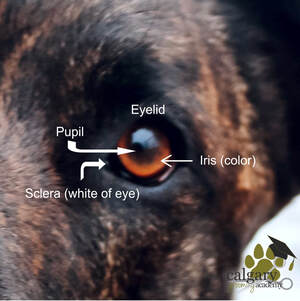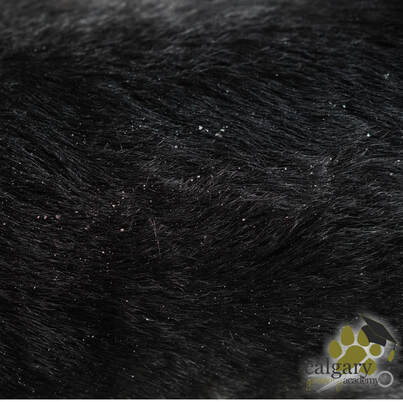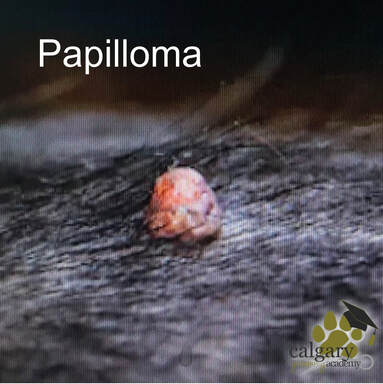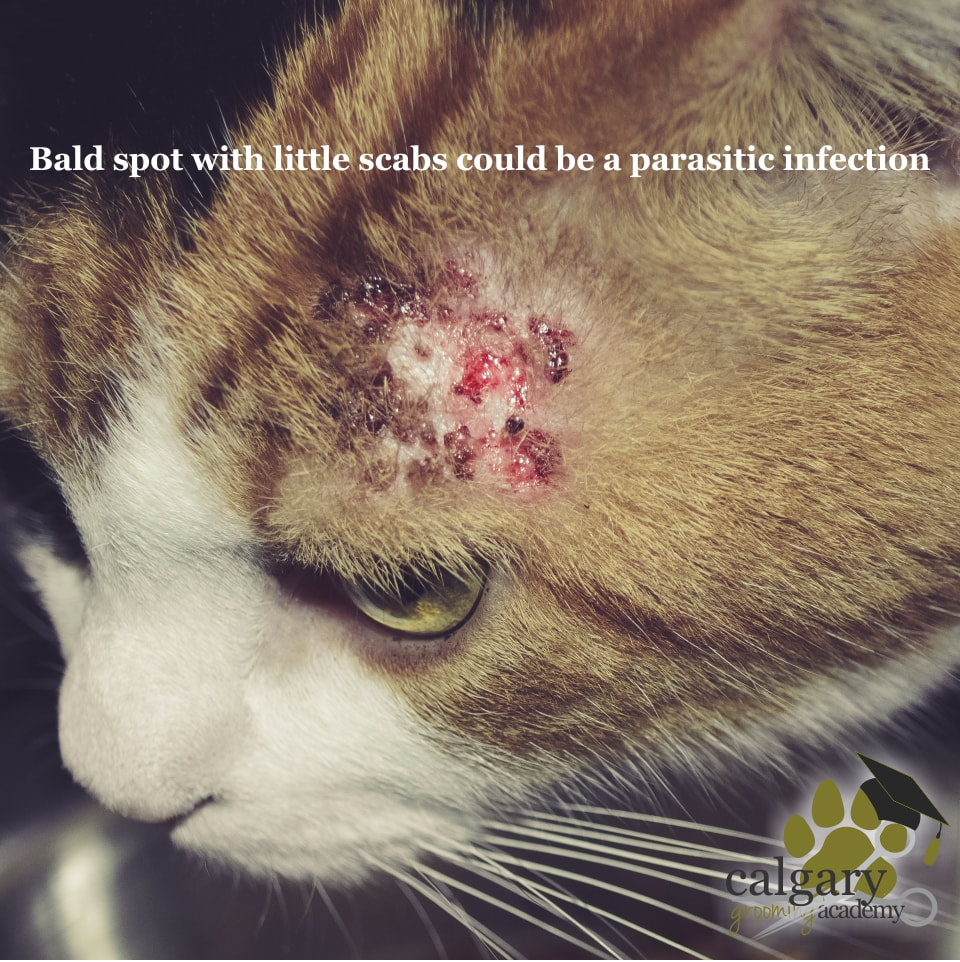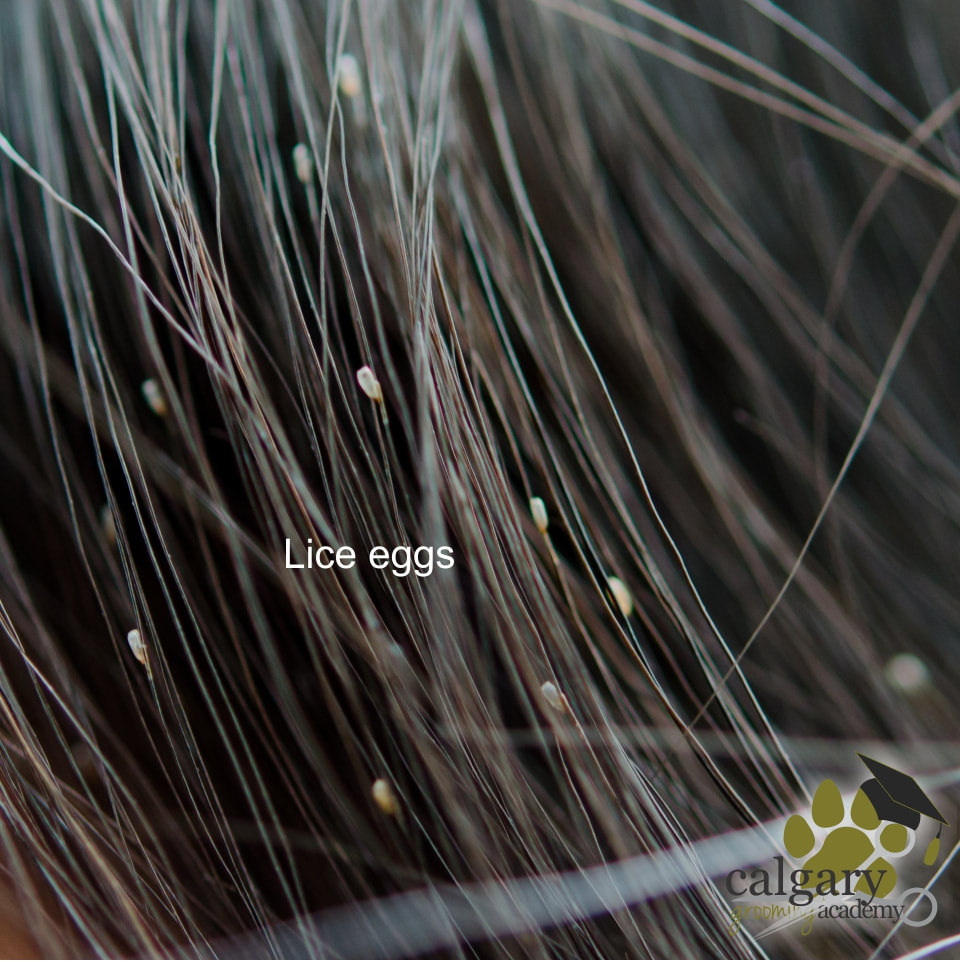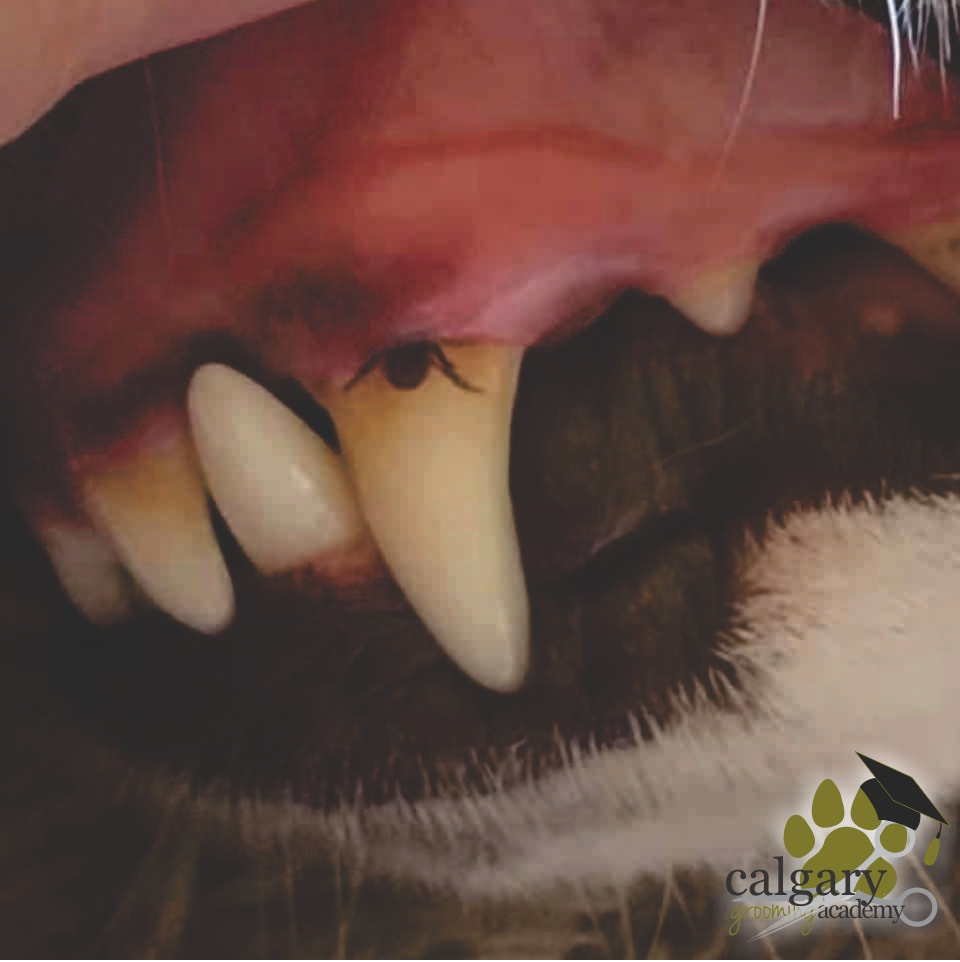Checking over your pet is important to maintaining health.
Many things can be spotted as you go through your normal daily routine with them. A more thorough check should be done as well (more frequently if your pet goes deep grass or wooded areas, swims in rivers....and so forth).
Many things can be spotted as you go through your normal daily routine with them. A more thorough check should be done as well (more frequently if your pet goes deep grass or wooded areas, swims in rivers....and so forth).
- How is their stance? Do they favor any limb? Having a hard time standing?
- Are their eyes bright and alert? Do they have staining running down from their eyes?
- How is their coat? smooth, silky, oily, course? Are they shedding excessively? Bald Patches?
- Are they itchy?
- Have you noticed any rashes? lumps? tiny parasites?
- Are the pads of the feet worn or ripped?
- Long nails?
- Look inside their ears, are they dirty, oily, smelly?
- Open their mouth and look at their teeth as well as the gums and tongue.
All of these are indications of a pets well-being.
For the proposes of this course we will briefly talk about a general check over but will focus on skin and coat problems.
Eyes
|
Examination includes checking the eyelids, sclera, cornea (outer lens) and third eyelid (nictitating membrane). First note any discharge under the eyes. Is it watery, mucoid, purulent (milky) or ropy (long, thick, and fibrous)? Is there any debris in the eye (hair or dirt)? Look for any lumps around the eye or on the eyelid. How are the lashes, and their position. Do the lashes roll into the eyes? Do the eyelids appear too big to touch/clean the eye surface effectively? Note the color of the eye sclera. Is the eye inflamed or sore looking? Is the third eyelid in the correct placement? Is it extending across the eye or bulging out? Is the eye cornea clear or cloudy? Looking at the cornea, are there visible blood vessels, does it appear moist? Compare the eyes together for similarity in size in pupils. Do they squint in either eye? Are there any brown spots on the iris?
|
|
Staining down the face under the eyes is a common issue in some dog breeds such as the shih tzu. The stains are caused by excessive tears and the brownish color can be caused from too much yeast in the system. Although the staining itself is not harmful to the pet, they can be unsightly and there may be a under laying health issue causes them. If left unattended (not wiped away) they can build up and cause the fur around the eyes to become crusted and later this can pull the fur away, causing raw/sore skin conditions.
Other issues may be causes excessive tears as well, such as long lashes or fur getting into the eyes, abnormally small tear ducts or large tear glands, stress, some drugs, diet, smoke, ear infections and even some plastic dishes can attribute to excessive tear production. Puppies in their teething stage sometimes produce more tears as well. If you notice a lot of tearing up, you should discuss this with your vet. |
Do NOT use bleaching products on the face as they can cause injury to the eyes. Products such as Tear Stain powder supplement may be helpful in controlling these stains (depending on the cause). Some products work better then others, so its best to discuss with your vet and remember, if one product isn't working, another might. See the active ingredient lists to ensure you buy the proper product for your pets specific issue.
All this aside, from a bathing point of view, always use a good shampoo that is tear-free and a small "eye comb". If the eye gunk has built up, soak the eyes in warm water for a few minutes before using any products or tools as pulling the crusted stains can pull the fur away from the skin or slightly stretch the eye lid away from the eye socket causing pain.
All this aside, from a bathing point of view, always use a good shampoo that is tear-free and a small "eye comb". If the eye gunk has built up, soak the eyes in warm water for a few minutes before using any products or tools as pulling the crusted stains can pull the fur away from the skin or slightly stretch the eye lid away from the eye socket causing pain.
Ears
|
Visual appearance & touch of the ear pinnae and a looker examination of the external ear canal is also important. Cats should be handled extra gently as their ears are very sensitive.
Note any fur loss, scabbing, hematomas (blood blister looking bumps), tumors or anything out of the ordinary. Check the ear canal for wax, debris or excessive hair build up. Note the color and texture of any discharge.
|
Ear cleaning is part of the grooming process and is discussed in greater depth in the grooming module. Specific ear solutions are used with a cotton ball to loosen and clean out the ear. Some breeds have hair growth in the ear canal and need it pulled out. A special product (ear powder) is purchased and put in the ear before ripping the hairs out as part of the grooming process.
Dental Care
Dental hygiene is important to start early in your pets life so they know the routine and it is less scary later. It also help prevent major dental surgeries later in life.
Some conditions and age can contribute to the decay of your pets teeth and gingivitis.
Sometimes symptoms are subtle, sometimes they are more obvious your pet needs some extra help with their teeth; smelly breath, dark spots on the teeth, red or swollen gums are all visible signs of some dental issues. Sometimes your pet may stop eating hard food, or their immune system weakens and they seem to get ill more often or more serve.
Teeth brushing with a pet tooth brush and pet tooth paste is your furry friends first defense in plaque build up. Specific dental diets can be purchased to help with dental care as well, and as a fun treat, many dental treats and chews are available for purchase. If the dental issues are to far gone for these simple treatments, a dental surgery may need to be done. Your veterinarian will discuss options with you during your annual health check.
Some conditions and age can contribute to the decay of your pets teeth and gingivitis.
Sometimes symptoms are subtle, sometimes they are more obvious your pet needs some extra help with their teeth; smelly breath, dark spots on the teeth, red or swollen gums are all visible signs of some dental issues. Sometimes your pet may stop eating hard food, or their immune system weakens and they seem to get ill more often or more serve.
Teeth brushing with a pet tooth brush and pet tooth paste is your furry friends first defense in plaque build up. Specific dental diets can be purchased to help with dental care as well, and as a fun treat, many dental treats and chews are available for purchase. If the dental issues are to far gone for these simple treatments, a dental surgery may need to be done. Your veterinarian will discuss options with you during your annual health check.
Integument System, (outer layer of skin and coat)
At first glance, what do you see?
Check the nail beds, nails and between the toes for moisture or discoloration. These are symptoms of licking the area excessively and can cause issues such as moist dermatitis. Check the pads on their paws for cracks, excessive smooth spots, rubbed out fur (bald spots), odd coloration, or any crusty appearance.
Run your hand over their coat, through the fur if fluffy and feel the texture. Now run your hand in the opposite direction, split the fur and look at the skin beneath for redness, bumps, cuts, scabs. Is your hand oily or dirty feeling afterwards? If you find lumps, are they above the skin (skin tag of cyst), or is it under the skin? Do the bumps have fur on them? What shape are they? Smooth and round or irregular and cauliflower like? Note the size and location to discuss with your vet (or client if your a groomer). For old lumps already known, check if they have changed in size, color, loss of fur, and hardness. Is the skin Bruised, wrinkled, thin, can you see the blood vessels easily? Look for blackheads and parasites!
Check the nail beds, nails and between the toes for moisture or discoloration. These are symptoms of licking the area excessively and can cause issues such as moist dermatitis. Check the pads on their paws for cracks, excessive smooth spots, rubbed out fur (bald spots), odd coloration, or any crusty appearance.
Run your hand over their coat, through the fur if fluffy and feel the texture. Now run your hand in the opposite direction, split the fur and look at the skin beneath for redness, bumps, cuts, scabs. Is your hand oily or dirty feeling afterwards? If you find lumps, are they above the skin (skin tag of cyst), or is it under the skin? Do the bumps have fur on them? What shape are they? Smooth and round or irregular and cauliflower like? Note the size and location to discuss with your vet (or client if your a groomer). For old lumps already known, check if they have changed in size, color, loss of fur, and hardness. Is the skin Bruised, wrinkled, thin, can you see the blood vessels easily? Look for blackheads and parasites!
|
Allergies and skin sensitivities should always be taken into account before choosing a shampoo and/or conditioner.
Other conditions should also be considered. Dry Flaky skin can sometimes be caused by health concerns such as cushings disease, or sometimes if the pet is lacking a specific vitamin. Omega 3 (fish oil) supplements can be a big help for some skin issues. Oily skin that flakes could be a symptom of a condition called seborrheic dermatitis. Remember, if the skin or fur has any abnormalities, the pet should see a vet to determine the cause and discuss any treatments if needed. Although the problem may seem obvious, there may be something missing from the diagnosis point of view. |
Feline Oil build up
Cats produce oil which can build up on the skin or in the coat. This is the leading cause of fur separation and matting in cats. To prevent this, cats sometimes need help with bathing and proper blow drying.
Feline chin acne is caused by excessive oil secretion's around the chin. Click for online photos. If not treated early (cleaned with degreasing shampoo) a trip to the vet will be needed if it gets infected. Corn starch can be lightly brushed on the chin as well to help
to absorb the oils and lessen the amount or severity of the acne.
Feline stud tail is very waxy and is normally find at the base of the tail. Like the chin acne, you can help this condition with regular grooming of the area and a light powder of corn starch in-between spa days.
Dandruff is dry flaky skin (visible)
Dander is dust size and not easily seen. Dander is the substance that causes some people to be allergic to animals.
Feline chin acne is caused by excessive oil secretion's around the chin. Click for online photos. If not treated early (cleaned with degreasing shampoo) a trip to the vet will be needed if it gets infected. Corn starch can be lightly brushed on the chin as well to help
to absorb the oils and lessen the amount or severity of the acne.
Feline stud tail is very waxy and is normally find at the base of the tail. Like the chin acne, you can help this condition with regular grooming of the area and a light powder of corn starch in-between spa days.
Dandruff is dry flaky skin (visible)
Dander is dust size and not easily seen. Dander is the substance that causes some people to be allergic to animals.
Skin Lesions
Ensure no foreign objects are in the wound. Open sores should be cleaned with a pet friendly antiseptic cream such as hibitane cream. Keep an eye on the area to make sure their are no retained foreign objects in there and no infection is starting. Depending where the lesion is, bandaging may be required to keep the area clean or to prevent the pet from licking or chewing. A cone or a t-shirt can be put on the animal to protect the area as well. If the sore gets worse, doesn't start to heal in a couple days, or the animal seems to be in discomfort, they should see a vet.
|
Papilloma
Oral Papilloma is more common in younger dogs, but can be found on older dogs and cats as well. It is very contagious.
Animals with Papilloma should be kept separate from other animals and their dishes and toys should be kept clean and separate as the virus can live on objects for quite some time. Caused by a virus, these bumps are mostly found around or in the mouth and commonly look like warts. Incubation usually takes 1 - 2 months to develop. Most of the time they will go away over time on their own. Depending on the pets immunity system they may linger. Sometimes animals will chew on them or scratch them causing infection or discomfort, in this case they should be taken to a vet to be removed. After they appear to be gone, wait 2 months before allowing the infected pet to play with healthy pets, to ensure the virus is gone from their system. |
Parasites!
Ringworm (dermatophytosis) is a fungal infection found on the outer layer skin, fur and sometimes nails. Although some types are host specific, not all are and it can infect any type if animal as well as humans (zoonotic). Ringworm can be hard to detect as the lesions are not always so visible and different strains look different. Alopecia (hair loss) can happen if the fungal spores infect the hair shafts. Sometimes no symptoms are shown at all and the pet can be an asymptomatic carrier. Ringworm is contagious and spreads by direct touch and can be left on inanimate objects for some time as well (up to 18 months).
Infected animals and people should NOT be in a grooming, daycare or boarding environment as they can contaminate the environment and spread the infection to others. If ringworm is suspected, your vet or doctor (if for a human patient) should be contacted for testing and treatment as needed. For a true negative test, a culture should be taken and tested to confirm when the pet or person is clear of the infection (reccomend two tests 30 days apart to ensure it doesn't come back from the environment). Fluorescence lamps are unfortunately not completely accurate and may give a wrong result.
Incubation ranges from 7 - 14 days, sometimes up to 21 days, which is why you should wait 30 days and re test to be sure it is gone.
For more information please read this article (Click here).
Infected animals and people should NOT be in a grooming, daycare or boarding environment as they can contaminate the environment and spread the infection to others. If ringworm is suspected, your vet or doctor (if for a human patient) should be contacted for testing and treatment as needed. For a true negative test, a culture should be taken and tested to confirm when the pet or person is clear of the infection (reccomend two tests 30 days apart to ensure it doesn't come back from the environment). Fluorescence lamps are unfortunately not completely accurate and may give a wrong result.
Incubation ranges from 7 - 14 days, sometimes up to 21 days, which is why you should wait 30 days and re test to be sure it is gone.
For more information please read this article (Click here).
Worms
Roundworms, hookworms, intestinal worms, whipworms, heartworms, pinworms, tapeworms and lungworms are all parasites that can infect your pet. Some of these worms can be seen in your pets stool. If the infestation is severe they can sometimes vomit them up as well. Most worms are transferred by ingestion, however some are small enough to penetrate the skin and get in through the pores or transferred by touching an open orifice . The best way to prevent these parasites is to have a routine de-worming treatment plan with your vet.
Giardia
Another contagious condition animals can get is Giardia, most commonly found in dogs, cats, humans and beavers. There are two types of giardia, determined by size. Both live in the intestine and can cause severe loose stool and lead to dehydration. Anytime an animal has severe or reoccurring loose stool, a vet should be consulted. A fecal test is done to diagnosis, and treatment can begin afterwards.
Ectoparasites
There are many types of ectoparasites (Parasites that live on the outside of the body), including fleas, lice, ticks, mites, chiggers, blood-sucking flies, and myiasis-inducing flies. Some are host specific and most can be identified by appearance or by the bites left behind. Treatment can be long and hard, therefore it is best to talk to your vet about prevention.
To identify a ectoparasite, part the fur and look closely at the skin, or the parasite if still attached.
To identify a ectoparasite, part the fur and look closely at the skin, or the parasite if still attached.
|
Fleas!
Ctenocephalides felis is the most common type of fleas on dogs and cats and are NOT host-specific (meaning they will jump to other animals and humans as well). More common in warm climates and low altitudes. Fleas can also cause dermatitis through the bites.
The full life cycle from egg hatching to adulthood laying eggs can take place in as little as 16 days. Unlike lice, (discussed later), eggs do NOT stick to the fur and tend to complete the incubation in beds, rugs and other areas the pet may have been. Treatment if caught early includes insecticides from your vet, if left too long, your home, car, yard (anywhere your pet has been) must be deeply cleaned and possibly sprayed with insecticides (careful not to allow other pets or people around these toxic chemicals). Never use a treatment containing permethrins on a cat as it is very toxic to them (even in small doses). |
|
Lice!
The most common type of lice to cause issues in domestic animals is Anoplura (sucking lice) and Mallophaga (chewing lice). Contracted through direct contact with infected animals or persons. Lice can be a problem all year round. They lay and "cement" eggs on the hosts hair/fur. They hatch into small larvae much like the adults and develop into nymphs and then adults later (approx 3 - 5 weeks).
Diagnosis is determined on appearance of larva, nymph or adult found. Anoplura (sucking lice) have pointed heads and Mallophaga (chewing lice) have bigger, thicker heads. Treatment involves dust, sprays, medicated baths and/or sponge -on dips as well as a thorough clean of their living space. |
|
Ticks!
Ticks have a host preference but are not host specific.
Ticks can either be soft or hard depending on the type. Ticks found in the ear are a form of soft tick and enter the ear in the larvae stage. Hard ticks have 3 general types, determined by how many hosts they generally live on through the life cycle. Ticks are visually seen for diagnosis. Treatment depends on the host and specific type of tick. Some require environmental treatments as well as the host treatment. A number of products are available from your vet to prevent most ectoparasites. (see the chart further down for examples of products) |
Always remember to check EVERYWHERE!
Ticks as well as other parasites can be found in the oddest and smallest of spaces on the host.
One common and major concern from ticks is lyme disease.
One common and major concern from ticks is lyme disease.
|
Mites!
There are a few types of mites that attack pets; most are host specific (only attack a particular species). Mites only live on the host and infect others by direct contact. Live cycles vary depending on the type of mite. Some burrow under the skin and some live on the surface of the skin. The life cycle generally takes about 17 days from egg to adult.
Usually a skin scraping is done to identify the specific mite type if the appearance is not sufficient. Some types can be ID'd by fecal flotation. Treatment is similar to lice, use of dust, sprays, dips or special shampoos. Mange is caused by a specific type of mite, causing the fur to drop away. |
Fly bites and Chigger bites are not poisonous, however they can be very painful. Depending on where the bites are, a cone or a shirt may be helpful in trying to prevent scratching, as itching may irritate the area or cause an infection. Wash the area with soap and water and apply a vet approved antiseptic such as Hibitane Cream.
Parasite preventives should be discussed with your vet before purchasing.
Some products are toxic to other pets in the home.
Some products are toxic to other pets in the home.
Many store brand products can cause mild - severe reactions.
Vaccines
Vaccine Requirements vary by province/region as different illnesses may by more prevalent in specific areas and therefore a vaccine for that illness may be needed. The border patrol, as well as most reputable companies, may require proof of vaccines before allowing any pet in their place of business or to cross the border.
The Canine core (basic) vaccine is a combination of 4 vaccines, (sometimes this vaccine is split up into a couple of vaccines):
Bordetella is a optional annual canine vaccine as known as Canine Cough or sometimes mistakenly referred to as kennel cough vaccine.
Some places also give dogs the Lyme vaccine, but mostly is they live in high risk areas of tick infestation (not recommended for dogs with urinary protein concerns).
Leptospirosis is an optional annual vaccine given by veterinarians only if they deem your dog to be a high risk of the disease. Although a zoonotic disease, there is no vaccine for cats at this time.
Rabies is required for dogs and recommended for cats to prevent the contraction of the zoonotic rabies virus. Rabies attacks the central nervous system and usually transmitted through a bite or a scratch from an infected animal.
The Feline core vaccine is much like the canine DA2PP in that it is a combination of a few vaccines sometimes referred to as FVRCP or the 3-way vaccine.
The Canine core (basic) vaccine is a combination of 4 vaccines, (sometimes this vaccine is split up into a couple of vaccines):
- D -Distemper
- A2 - Adenovirus
- P - Parainfluenza
- P - Parvovirus (sometimes abbreviated as Pv or CPV)
Bordetella is a optional annual canine vaccine as known as Canine Cough or sometimes mistakenly referred to as kennel cough vaccine.
Some places also give dogs the Lyme vaccine, but mostly is they live in high risk areas of tick infestation (not recommended for dogs with urinary protein concerns).
Leptospirosis is an optional annual vaccine given by veterinarians only if they deem your dog to be a high risk of the disease. Although a zoonotic disease, there is no vaccine for cats at this time.
Rabies is required for dogs and recommended for cats to prevent the contraction of the zoonotic rabies virus. Rabies attacks the central nervous system and usually transmitted through a bite or a scratch from an infected animal.
The Feline core vaccine is much like the canine DA2PP in that it is a combination of a few vaccines sometimes referred to as FVRCP or the 3-way vaccine.
- FVR - rhinotracheitis (triggered by the feline herpes virus)
- C - calicivirus (respiratory infection virus)
- P - panleukopenia (feline parvovirus)

